Women's World Chp. 5.2: Take a bow, Harika!
Chess celebrated an amazing sporting event in Tehran, Iran when Dronavalli Harika displayed tremendous grit and merit to outplay China's Tan Zhongyi. It looked like a sealed deal until the players landed in a position where Harika had to mate Zhongyi using a knight and a bishop. Should be easy for a grandmaster? Not really.
Women's World Chp. 5.2: Take a bow, Harika!
Photos by David Llada
It is safe to assume that 24the February was the most important day in the life of Dronavalli Harika until today. Her childhood dream, and not just that, her entire way of life, depends on one simple goal. Harika wants to become the World Champion.
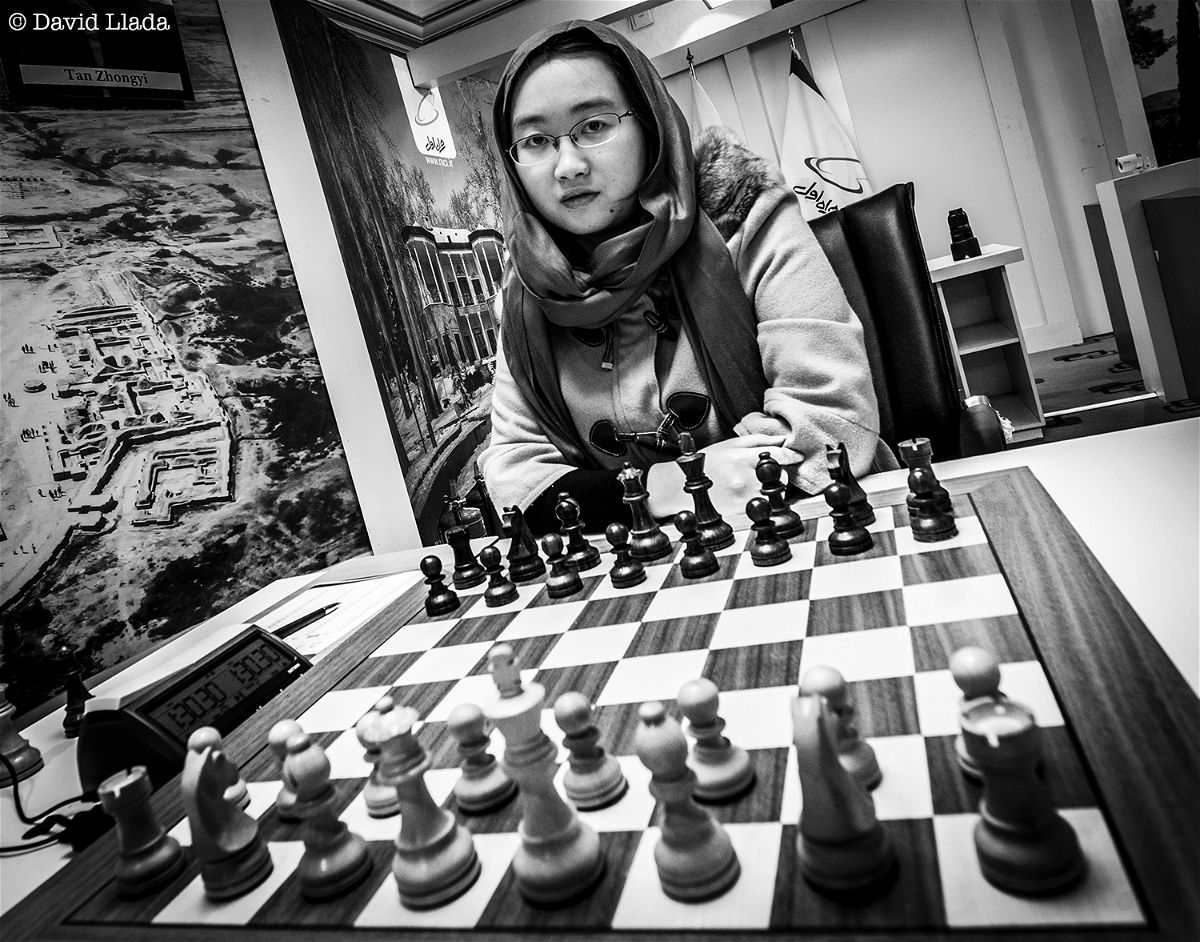
A day before yesterday, her hopes were all but dashed by China's Tan Zhongyi. Zhongyi had not just beaten Harika with white, she had mercilessly crushed her.

The psychological scar of being beaten as badly as in game one would have thrown many off balance, But not Dronavalli Harika.
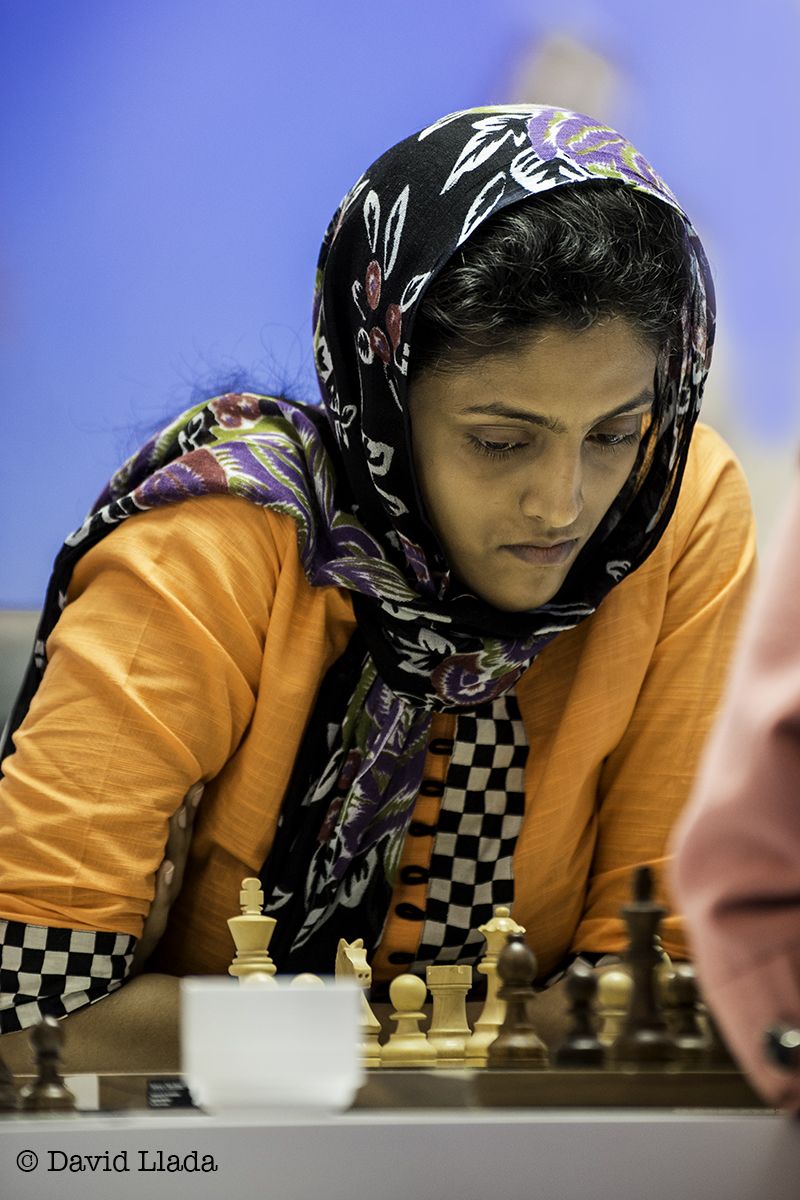
She played a strategic masterpiece with the white pieces in a must -win situation.
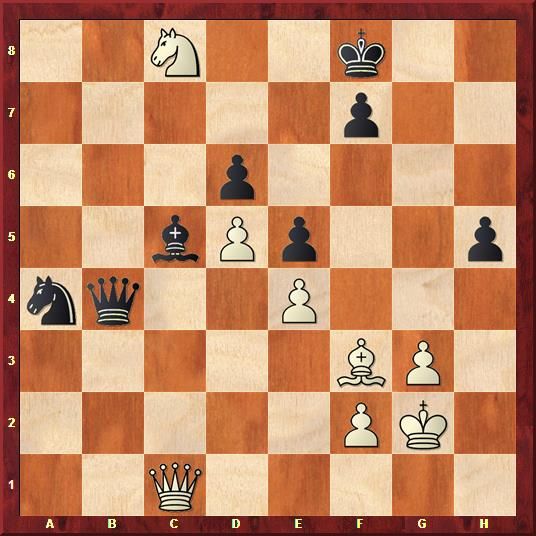
Harika was just one winning shot away on move 52. Can you find the forced mate that Harika missed?
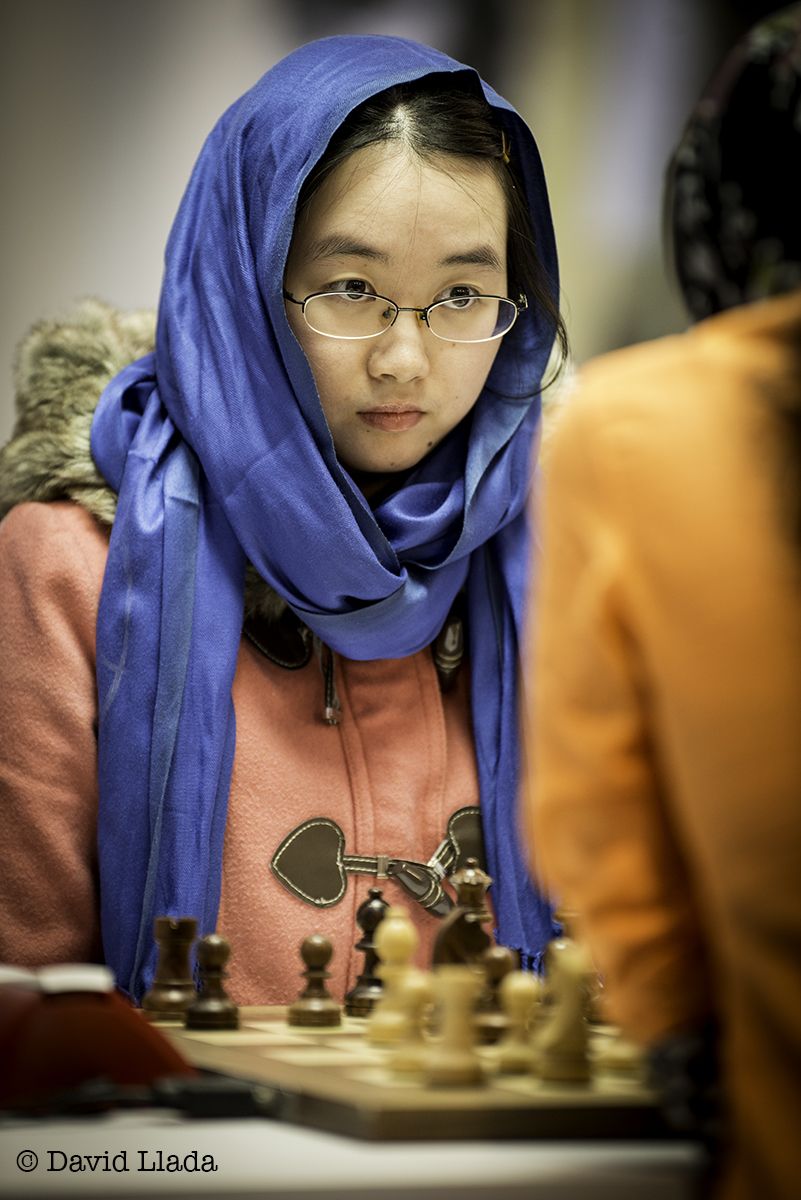
Tan Zhongyi was not completely out and she kept presenting practical problems to Harika.
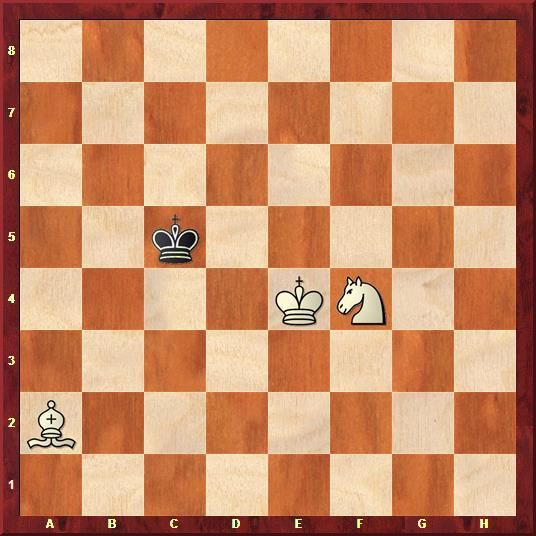
They reached this endgame where Harika had to mate Zhongyi with a bishop and a knight. But instead of proceeding to win with ease, Harika was clearly struggling! It was obvious that the pressure on her was simply too high!

The rulebook says that you have to win within 50 moves. 20 turned to 30 moves and 30 turned to 40. Just when spectators thought Harika had lost the plot, there appeared a mate! It took her 45 moves, just 5 short of being knocked out of the world championship!

Amruta Mokal of ChessBase India is better known to our readers for her excellent multimedia reports. She is a WIM-elect with a rating of 2107 and here, she analyzes Harika's victory in depth.
[Event "FIDE WWCC 2017"]
[Site "Tehran"]
[Date "2017.02.24"]
[Round "5.2"]
[White "Harika, Dronavalli"]
[Black "Tan, Zhongyi"]
[Result "1-0"]
[ECO "B51"]
[WhiteElo "2539"]
[BlackElo "2502"]
[Annotator "Amruta Mokal"]
[PlyCount "323"]
[EventDate "2017.??.??"]
[SourceDate "2003.06.08"]
[Site "Tehran"]
[Date "2017.02.24"]
[Round "5.2"]
[White "Harika, Dronavalli"]
[Black "Tan, Zhongyi"]
[Result "1-0"]
[ECO "B51"]
[WhiteElo "2539"]
[BlackElo "2502"]
[Annotator "Amruta Mokal"]
[PlyCount "323"]
[EventDate "2017.??.??"]
[SourceDate "2003.06.08"]
1. e4 c5 2. Nf3 Nc6 3. Bb5 d6 4. O-O Bd7 5. Re1 Nf6 6. c3 a6 7. Bc4 {the
latest trend} (7. Bf1 {is more popular}) 7... b5 (7... Bg4 8. d4 cxd4 9. cxd4
e5 10. dxe5 dxe5 11. Bd5 Qb6 12. Bxc6+ bxc6 13. Be3 Qxb2 14. Nbd2 Rd8 15. Qa4
Be7 16. Rab1 Qa3 17. Qxa3 Bxa3 18. Nc4 Be7 19. Ncxe5 Rc8 20. Rb7 h6 21. h3 Be6
22. Nd4 Bxa2 23. Ra1 Bd6 24. Nef3 c5 25. Nf5 {1-0 (25) Safarli,E (2678)
-Aravindh,C (2543) Biel 2016}) 8. Bf1 e5 9. d4 Be7 10. d5 Na7 11. Nbd2 O-O 12.
Bd3 $5 {A very interesting idea. In closed positions to strategize regrouping
of pieces is not so easy. Makes way for knight to come from f1 to g3} Nc8 $1 {
This knight starts its journey too!} 13. Nf1 Nb6 14. h3 Qc7 15. Ng3 a5 16. Bg5
({The move loved by many} 16. Nh4 $1 {would have been possible as the usual
tactic} Nfxd5 $2 {doesnt work because of} (16... Nxe4 $2 17. Rxe4 f5 18. Nhxf5
Bxf5 19. Nxf5 Rxf5 20. Rg4 Rf7 21. Bxb5 $16) (16... g6 {would be the best way
to answer but then white would be happy to have provoked it and simply go back
to f3 and then use blacks weak dark squares.}) 17. exd5 Bxh4 {and now the
simple reverse/counter tactic} 18. Qh5 $1 $16 {with double attack and a clear
advantage}) 16... Rfe8 (16... Na4 $5 17. Rb1 c4 18. Bc2 Nc5 19. Nh5 Nxh5 (19...
Kh8 20. Nxf6 Bxf6 21. Bxf6 gxf6 22. Nh4 Rg8 23. Re3 $13) 20. Bxe7 Rfe8 21. Nxe5
Rxe7 (21... dxe5 22. d6 Qb7 23. Qxh5 $16) (21... Nf4 22. Nxd7 Qxd7 23. Bg5 Nfd3
24. Re2 Nxe4 25. Be3 Nec5 26. b3 $1 $13) 22. Nxd7 Qxd7 23. Qxh5) 17. Qc1 (17.
Qe2 c4 18. Bc2 h6 19. Be3 Rab8 20. Nd2 Rec8 21. f4 $36 {was a possibility.})
17... h6 18. Be3 ({The first question any Sacrifice lover would ask himself is,
"Will the sacrifice work?"} 18. Bxh6 gxh6 19. Qxh6 Nh7 (19... Qd8 20. Qg5+ Kh8
21. Nf5 Bf8 22. N3h4 $15) 20. Nf5 Bxf5 21. exf5 Bf8 22. Qh4 c4 23. Bc2 Qd8 $19)
18... c4 19. Bc2 b4 (19... Na4 $1 {looks like a typical bookish move.} 20. Bxa4
bxa4 21. Nd2 Rab8 22. Nb1 $1 Nxe4 $1 23. Nxe4 f5 24. Bxh6 fxe4 25. Be3 {
A very weird position with tremendous complications}) 20. Qd1 {Harika makes
subtle queen moves in order to provoke weaknesses in opponents camp} Reb8 $6 {
This move looks logical because after the capture on b4 the a8 rook will
have a ready made open file and other rook is needed on b-file. But here it
was important to understand that c4 is a bit weak considering Nb6 is always
under pressure and that placement of rooks on b8-c8 would be more useful with
the pawn tension still being maintained.} 21. Nd2 Nh7 (21... Rc8 {There was
still time to rectify the rook position.}) 22. Qe2 Rc8 {Now it's already late}
(22... Bg5 $142 23. Bxb6 Qxb6 24. Nxc4 Qc5 {Almost like the game but rook on
b8 helps in maintaining some pressure and gaining time to improve the pieces.}
25. Bd3 Nf6 $44 {with ideas like Nh5-f4 and Bb5.}) 23. Bxb6 Qxb6 24. Nxc4 {
White has won some material but still not so easy to convert because of the
quality of blacks pieces and weak pawns for white} Qc5 25. Bd3 bxc3 26. bxc3
Bg5 27. Rab1 Rab8 28. Nf1 (28. Rb2 $142 Nf6 29. Reb1 Rxb2 30. Qxb2 $16 {
and the b-file remains in white's control}) 28... Nf8 29. Kh2 h5 $2 (29... g6 {
maybe she was calculating g6-h5 with the idea of improving the position on KS
slowly to cramp white's king and h5 was just a blunder?! I cannot understand
otherwise!}) 30. Qxh5 Bf4+ 31. Kg1 Bb5 $2 32. Qe2 (32. Rxb5 $1 Rxb5 {This is
definitely easy to consider. But white probably missed} (32... Qxb5 33. Nxd6
Qxd3 (33... Qd7 34. Nxc8 Rxc8 $18) 34. Qxf7+ Kh7 35. Nxc8 Rxc8 36. Qf5+ Kg8 37.
Qxc8 $18) 33. g3 $3 {the idea is beautiful} (33. Nxd6 {does not work} Rb2 34.
Qxf7+ Kh8 35. Qh5+ Kg8 36. Qf7+ $11 {and white must settle for a draw which
Harika would not go for.}) 33... Bh6 (33... g6 34. Qh4) 34. Nxd6 Rb2 (34...
Qxd6 35. Bxb5 Rxc3 36. Rb1 $18) 35. Qxf7+ {and now the queen supports f2 only
because of whites 33. g3 move!} Kh8 36. Nxc8 Qxc8 $18) 32... Bxc4 33. Rxb8 Rxb8
34. Bxc4 Qa3 35. Bb5 Qxc3 36. a4 {After fixing the pawns, we see it is a fight
between the weaknesses a4-e4-f2 vs a5-d6-f7. And not to forget, Black being a
pawn down on h-file his king is weak.} Rc8 37. g3 Bg5 38. Ne3 Qb4 (38... Bxe3
39. Qxe3 Rc5 {This could be not so bad try for black, though I am not sure.})
39. Nc4 Nd7 40. Nxa5 (40. Qf1 $1 {A chance to keep up with the reputation of
whites middlegame which consisted subtle moves! Here the idea is Rb1 and Black
is in grave problems}) 40... Rc2 (40... Qxa5 41. Bxd7 Qxe1+ 42. Qxe1 Rc1 43.
Qxc1 Bxc1 44. a5 Ba3 45. a6 Bc5 46. Kg2 Kf8 47. f4 Ke7 48. Bc6 $18 {would be a
technically winning opposite colours endgame. It would be interesting to
study how to convert this!}) 41. Qxc2 Qxe1+ 42. Kg2 Nc5 43. Nc6 $1 Bd2 (43...
Nxe4 44. Qe2 $1 {forcing queen exchange} Qxe2 45. Bxe2 $18 {and white has his
a-pawn rolling}) 44. Bd3 (44. Nxe5 dxe5 45. Qxc5 {One must remember in
opposite coloured bishops the one who is in attacking position enjoys the
advantage sometimes as much as a piece up!} Qxe4+ 46. f3 {Practically a kind
of position one would avoid as black has perpetual chances, as it seems on the
surface. Surprisingly, the assessment is white's king is safer than black's!
Firstly e2 square is controlled and secondly, because of Bishop on d2 black has
no check and less time to arrange for it as white has strong threats.} Qe1 47.
Qc8+ Kh7 48. Qe8 Be3 49. Bd3+ $18 {with a winning position}) 44... g6 45. h4 $1
{On the way to create a new weakness.} (45. Nxe5 Nxd3 46. Nxd3 Qxe4+ 47. f3 Qe3
$18 {But I would say having the light-squared bishop with the d-pass pawn was a
better version than this}) 45... Bc3 46. Be2 (46. Ne7+ {also possible} Kg7 47.
Nc8 Nxd3 48. Qxd3 Bd4 49. Qf3 Qb4 (49... Bc5 50. h5 gxh5 51. Ne7 {with the
idea of Nf5. Queen and knight combination would be too strong along with the
a-pass pawn}) 50. h5 Bc5 51. a5 $1 Qxa5 52. h6+ Kxh6 53. Qf6 $18 {would be
devastating}) 46... Nxa4 (46... Bd4 47. Bf3) 47. Ne7+ ({Here white had a real
beauty. And of course, it's subtle again!} 47. Qd3 $3 Nc5 48. Qf3 Bd4 49. Qf6 $18
{What a queen! Beautiful!}) 47... Kf8 48. Nc8 Bd4 49. Bf3 Qb4 50. h5 gxh5 $2 (
50... Qc5 51. Qxa4 Qxc8 52. Qc6 Qd8 53. hxg6 fxg6 $16) 51. Qc1 (51. Qc7 Qd2 52.
Qe7+ Kg7 53. Nxd6 Qxf2+ 54. Kh3 Qxf3 55. Nf5+ $18) 51... Bc5 52. Qh6+ $2 (52.
Qg5 $1 Qb7 53. Qd8+ Kg7 54. Ne7 {will lead to mate in some moves.}) 52... Ke8
53. Bxh5 Qxe4+ 54. Bf3 Qg6 55. Qh4 Kd7 56. Be4 f5 57. Ne7 $2 (57. Qe7+ Kxc8 58.
Bd3 {white missed a forced mate of Ba6}) 57... Qf7 58. Bxf5+ Kc7 59. f3 Nb6 60.
Be6 Qg7 61. Nf5 Qf8 62. Qh7+ Kb8 63. Ne7 Nc4 64. Nc6+ Ka8 65. Qg8 Qxg8 66. Bxg8
Kb7 67. g4 Be3 68. Nd8+ Kc7 69. Ne6+ Kd7 70. g5 Ke7 71. Bh7 Nb6 72. g6 Nxd5 73.
g7 Nf6 74. g8=Q Nxg8 75. Bxg8 Kd7 76. Nf8+ Kc6 77. Ng6 Bg5 (77... Kc5 78. Kg3
Kd4 79. Ne7 e4 80. Nf5+ Kd3 81. Nxe3 Kxe3 82. f4 $18) 78. Kh3 Kc5 79. Kg4 Bd8
80. Nf8 Ba5 81. Ne6+ Kc4 82. Kf5 Kd3 83. Ng5 Kd4 84. Ba2 Bb4 85. Ne6+ Ke3 86.
Bd5 Ba5 87. Ng5 Kd4 88. Ke6 Bc7 89. Ne4 Ke3 90. Nxd6 Kf4 91. Be4 Ba5 92. Nb7
Bc3 93. Nc5 Kg5 94. Nd3 Bd2 95. Kxe5 Bc3+ 96. Ke6 Bd2 97. Bc6 Kg6 98. Ke5 Kg5
99. Ke4 Kf6 100. Nf2 Ke6 101. Bd5+ Kd6 102. Ba2 Kd7 103. Ng4 Bg5 104. Ne5+ Kc7
105. Bb3 Bh6 106. Nc4 Bg5 107. Ba4 Kd8 108. Ne3 Kc7 109. Bb5 Kd6 110. Nf5+ Kc5
111. Be8 Kb4 112. Nd4 Bh6 113. Ne2 Kc5 114. Bf7 Bg5 115. Ba2 Bh6 116. f4 Bxf4
117. Nxf4 Kb4 118. Kd4 Kb5 119. Bd5 Kb4 120. Bc4 Ka3 121. Nd3 Ka4 122. Kc5 Ka3
123. Be6 Ka4 124. Nb4 Ka3 125. Kc4 Kb2 126. Bg4 Kc1 127. Kc3 Kb1 128. Nc2 Ka2
129. Be6+ Kb1 130. Ne3 ({The easiest way to checkmate is the following} 130.
Bd5 Kc1 131. Ba2 Kd1 132. Nd4 Ke1 (132... Kc1 133. Ne2+ Kd1 134. Kd3 Ke1 135.
Ke3 Kf1 136. Nf4 Ke1 137. Bb3 Kf1 138. Bc2 Kg1 139. Bd3 Kh2 140. Kf2 Kh1 141.
Bf5 Kh2 142. Ne2 Kh1 143. Ng3+ Kh2 144. Nf1+ Kh1 145. Be4#) 133. Kd3 Kf2 134.
Ne2 Kf3 135. Be6 $18 {The king is blocked and now it is easy to win.} Kf2 136.
Kd2 Kf3 137. Bf5 Kf2 138. Bg4 Kf1 139. Ke3 Ke1 140. Nf4 Kf1 141. Be6 Ke1 142.
Bb3 Kf1 143. Ba4 Ke1 144. Ng2+ Kf1 145. Kf3 $18) 130... Ka1 131. Nc4 Kb1 132.
Nd2+ Ka1 133. Nb3+ Kb1 134. Bf5+ Ka2 135. Be4 Ka3 136. Bb1 Ka4 137. Nd4 Ka5
138. Kc4 Kb6 139. Bg6 Kc7 140. Kd5 Kd7 141. Nc6 Kc7 142. Kc5 Kd7 143. Bf7 Kc8
144. Be6+ Kc7 145. Ne5 Kb7 146. Bd5+ Kc8 147. Kd6 Kd8 148. Bf7 Kc8 149. Kc6 Kd8
150. Ng6 Kc8 151. Bd5 Kd8 152. Kd6 Ke8 153. Bb3 Kd8 154. Ba4 Kc8 155. Bc6 Kd8
156. Ne5 Kc8 157. Bd7+ Kb7 158. Nc4 Ka6 159. Kc7 Ka7 160. Bb5 Ka8 161. Nb6+ Ka7
162. Nc8+ {Everyone in the chess world was on the edge of their seats. Five
moves were left, but Harika managed to checkmate her opponent! What a game!
Well done Harika.} 1-0
latest trend} (7. Bf1 {is more popular}) 7... b5 (7... Bg4 8. d4 cxd4 9. cxd4
e5 10. dxe5 dxe5 11. Bd5 Qb6 12. Bxc6+ bxc6 13. Be3 Qxb2 14. Nbd2 Rd8 15. Qa4
Be7 16. Rab1 Qa3 17. Qxa3 Bxa3 18. Nc4 Be7 19. Ncxe5 Rc8 20. Rb7 h6 21. h3 Be6
22. Nd4 Bxa2 23. Ra1 Bd6 24. Nef3 c5 25. Nf5 {1-0 (25) Safarli,E (2678)
-Aravindh,C (2543) Biel 2016}) 8. Bf1 e5 9. d4 Be7 10. d5 Na7 11. Nbd2 O-O 12.
Bd3 $5 {A very interesting idea. In closed positions to strategize regrouping
of pieces is not so easy. Makes way for knight to come from f1 to g3} Nc8 $1 {
This knight starts its journey too!} 13. Nf1 Nb6 14. h3 Qc7 15. Ng3 a5 16. Bg5
({The move loved by many} 16. Nh4 $1 {would have been possible as the usual
tactic} Nfxd5 $2 {doesnt work because of} (16... Nxe4 $2 17. Rxe4 f5 18. Nhxf5
Bxf5 19. Nxf5 Rxf5 20. Rg4 Rf7 21. Bxb5 $16) (16... g6 {would be the best way
to answer but then white would be happy to have provoked it and simply go back
to f3 and then use blacks weak dark squares.}) 17. exd5 Bxh4 {and now the
simple reverse/counter tactic} 18. Qh5 $1 $16 {with double attack and a clear
advantage}) 16... Rfe8 (16... Na4 $5 17. Rb1 c4 18. Bc2 Nc5 19. Nh5 Nxh5 (19...
Kh8 20. Nxf6 Bxf6 21. Bxf6 gxf6 22. Nh4 Rg8 23. Re3 $13) 20. Bxe7 Rfe8 21. Nxe5
Rxe7 (21... dxe5 22. d6 Qb7 23. Qxh5 $16) (21... Nf4 22. Nxd7 Qxd7 23. Bg5 Nfd3
24. Re2 Nxe4 25. Be3 Nec5 26. b3 $1 $13) 22. Nxd7 Qxd7 23. Qxh5) 17. Qc1 (17.
Qe2 c4 18. Bc2 h6 19. Be3 Rab8 20. Nd2 Rec8 21. f4 $36 {was a possibility.})
17... h6 18. Be3 ({The first question any Sacrifice lover would ask himself is,
"Will the sacrifice work?"} 18. Bxh6 gxh6 19. Qxh6 Nh7 (19... Qd8 20. Qg5+ Kh8
21. Nf5 Bf8 22. N3h4 $15) 20. Nf5 Bxf5 21. exf5 Bf8 22. Qh4 c4 23. Bc2 Qd8 $19)
18... c4 19. Bc2 b4 (19... Na4 $1 {looks like a typical bookish move.} 20. Bxa4
bxa4 21. Nd2 Rab8 22. Nb1 $1 Nxe4 $1 23. Nxe4 f5 24. Bxh6 fxe4 25. Be3 {
A very weird position with tremendous complications}) 20. Qd1 {Harika makes
subtle queen moves in order to provoke weaknesses in opponents camp} Reb8 $6 {
This move looks logical because after the capture on b4 the a8 rook will
have a ready made open file and other rook is needed on b-file. But here it
was important to understand that c4 is a bit weak considering Nb6 is always
under pressure and that placement of rooks on b8-c8 would be more useful with
the pawn tension still being maintained.} 21. Nd2 Nh7 (21... Rc8 {There was
still time to rectify the rook position.}) 22. Qe2 Rc8 {Now it's already late}
(22... Bg5 $142 23. Bxb6 Qxb6 24. Nxc4 Qc5 {Almost like the game but rook on
b8 helps in maintaining some pressure and gaining time to improve the pieces.}
25. Bd3 Nf6 $44 {with ideas like Nh5-f4 and Bb5.}) 23. Bxb6 Qxb6 24. Nxc4 {
White has won some material but still not so easy to convert because of the
quality of blacks pieces and weak pawns for white} Qc5 25. Bd3 bxc3 26. bxc3
Bg5 27. Rab1 Rab8 28. Nf1 (28. Rb2 $142 Nf6 29. Reb1 Rxb2 30. Qxb2 $16 {
and the b-file remains in white's control}) 28... Nf8 29. Kh2 h5 $2 (29... g6 {
maybe she was calculating g6-h5 with the idea of improving the position on KS
slowly to cramp white's king and h5 was just a blunder?! I cannot understand
otherwise!}) 30. Qxh5 Bf4+ 31. Kg1 Bb5 $2 32. Qe2 (32. Rxb5 $1 Rxb5 {This is
definitely easy to consider. But white probably missed} (32... Qxb5 33. Nxd6
Qxd3 (33... Qd7 34. Nxc8 Rxc8 $18) 34. Qxf7+ Kh7 35. Nxc8 Rxc8 36. Qf5+ Kg8 37.
Qxc8 $18) 33. g3 $3 {the idea is beautiful} (33. Nxd6 {does not work} Rb2 34.
Qxf7+ Kh8 35. Qh5+ Kg8 36. Qf7+ $11 {and white must settle for a draw which
Harika would not go for.}) 33... Bh6 (33... g6 34. Qh4) 34. Nxd6 Rb2 (34...
Qxd6 35. Bxb5 Rxc3 36. Rb1 $18) 35. Qxf7+ {and now the queen supports f2 only
because of whites 33. g3 move!} Kh8 36. Nxc8 Qxc8 $18) 32... Bxc4 33. Rxb8 Rxb8
34. Bxc4 Qa3 35. Bb5 Qxc3 36. a4 {After fixing the pawns, we see it is a fight
between the weaknesses a4-e4-f2 vs a5-d6-f7. And not to forget, Black being a
pawn down on h-file his king is weak.} Rc8 37. g3 Bg5 38. Ne3 Qb4 (38... Bxe3
39. Qxe3 Rc5 {This could be not so bad try for black, though I am not sure.})
39. Nc4 Nd7 40. Nxa5 (40. Qf1 $1 {A chance to keep up with the reputation of
whites middlegame which consisted subtle moves! Here the idea is Rb1 and Black
is in grave problems}) 40... Rc2 (40... Qxa5 41. Bxd7 Qxe1+ 42. Qxe1 Rc1 43.
Qxc1 Bxc1 44. a5 Ba3 45. a6 Bc5 46. Kg2 Kf8 47. f4 Ke7 48. Bc6 $18 {would be a
technically winning opposite colours endgame. It would be interesting to
study how to convert this!}) 41. Qxc2 Qxe1+ 42. Kg2 Nc5 43. Nc6 $1 Bd2 (43...
Nxe4 44. Qe2 $1 {forcing queen exchange} Qxe2 45. Bxe2 $18 {and white has his
a-pawn rolling}) 44. Bd3 (44. Nxe5 dxe5 45. Qxc5 {One must remember in
opposite coloured bishops the one who is in attacking position enjoys the
advantage sometimes as much as a piece up!} Qxe4+ 46. f3 {Practically a kind
of position one would avoid as black has perpetual chances, as it seems on the
surface. Surprisingly, the assessment is white's king is safer than black's!
Firstly e2 square is controlled and secondly, because of Bishop on d2 black has
no check and less time to arrange for it as white has strong threats.} Qe1 47.
Qc8+ Kh7 48. Qe8 Be3 49. Bd3+ $18 {with a winning position}) 44... g6 45. h4 $1
{On the way to create a new weakness.} (45. Nxe5 Nxd3 46. Nxd3 Qxe4+ 47. f3 Qe3
$18 {But I would say having the light-squared bishop with the d-pass pawn was a
better version than this}) 45... Bc3 46. Be2 (46. Ne7+ {also possible} Kg7 47.
Nc8 Nxd3 48. Qxd3 Bd4 49. Qf3 Qb4 (49... Bc5 50. h5 gxh5 51. Ne7 {with the
idea of Nf5. Queen and knight combination would be too strong along with the
a-pass pawn}) 50. h5 Bc5 51. a5 $1 Qxa5 52. h6+ Kxh6 53. Qf6 $18 {would be
devastating}) 46... Nxa4 (46... Bd4 47. Bf3) 47. Ne7+ ({Here white had a real
beauty. And of course, it's subtle again!} 47. Qd3 $3 Nc5 48. Qf3 Bd4 49. Qf6 $18
{What a queen! Beautiful!}) 47... Kf8 48. Nc8 Bd4 49. Bf3 Qb4 50. h5 gxh5 $2 (
50... Qc5 51. Qxa4 Qxc8 52. Qc6 Qd8 53. hxg6 fxg6 $16) 51. Qc1 (51. Qc7 Qd2 52.
Qe7+ Kg7 53. Nxd6 Qxf2+ 54. Kh3 Qxf3 55. Nf5+ $18) 51... Bc5 52. Qh6+ $2 (52.
Qg5 $1 Qb7 53. Qd8+ Kg7 54. Ne7 {will lead to mate in some moves.}) 52... Ke8
53. Bxh5 Qxe4+ 54. Bf3 Qg6 55. Qh4 Kd7 56. Be4 f5 57. Ne7 $2 (57. Qe7+ Kxc8 58.
Bd3 {white missed a forced mate of Ba6}) 57... Qf7 58. Bxf5+ Kc7 59. f3 Nb6 60.
Be6 Qg7 61. Nf5 Qf8 62. Qh7+ Kb8 63. Ne7 Nc4 64. Nc6+ Ka8 65. Qg8 Qxg8 66. Bxg8
Kb7 67. g4 Be3 68. Nd8+ Kc7 69. Ne6+ Kd7 70. g5 Ke7 71. Bh7 Nb6 72. g6 Nxd5 73.
g7 Nf6 74. g8=Q Nxg8 75. Bxg8 Kd7 76. Nf8+ Kc6 77. Ng6 Bg5 (77... Kc5 78. Kg3
Kd4 79. Ne7 e4 80. Nf5+ Kd3 81. Nxe3 Kxe3 82. f4 $18) 78. Kh3 Kc5 79. Kg4 Bd8
80. Nf8 Ba5 81. Ne6+ Kc4 82. Kf5 Kd3 83. Ng5 Kd4 84. Ba2 Bb4 85. Ne6+ Ke3 86.
Bd5 Ba5 87. Ng5 Kd4 88. Ke6 Bc7 89. Ne4 Ke3 90. Nxd6 Kf4 91. Be4 Ba5 92. Nb7
Bc3 93. Nc5 Kg5 94. Nd3 Bd2 95. Kxe5 Bc3+ 96. Ke6 Bd2 97. Bc6 Kg6 98. Ke5 Kg5
99. Ke4 Kf6 100. Nf2 Ke6 101. Bd5+ Kd6 102. Ba2 Kd7 103. Ng4 Bg5 104. Ne5+ Kc7
105. Bb3 Bh6 106. Nc4 Bg5 107. Ba4 Kd8 108. Ne3 Kc7 109. Bb5 Kd6 110. Nf5+ Kc5
111. Be8 Kb4 112. Nd4 Bh6 113. Ne2 Kc5 114. Bf7 Bg5 115. Ba2 Bh6 116. f4 Bxf4
117. Nxf4 Kb4 118. Kd4 Kb5 119. Bd5 Kb4 120. Bc4 Ka3 121. Nd3 Ka4 122. Kc5 Ka3
123. Be6 Ka4 124. Nb4 Ka3 125. Kc4 Kb2 126. Bg4 Kc1 127. Kc3 Kb1 128. Nc2 Ka2
129. Be6+ Kb1 130. Ne3 ({The easiest way to checkmate is the following} 130.
Bd5 Kc1 131. Ba2 Kd1 132. Nd4 Ke1 (132... Kc1 133. Ne2+ Kd1 134. Kd3 Ke1 135.
Ke3 Kf1 136. Nf4 Ke1 137. Bb3 Kf1 138. Bc2 Kg1 139. Bd3 Kh2 140. Kf2 Kh1 141.
Bf5 Kh2 142. Ne2 Kh1 143. Ng3+ Kh2 144. Nf1+ Kh1 145. Be4#) 133. Kd3 Kf2 134.
Ne2 Kf3 135. Be6 $18 {The king is blocked and now it is easy to win.} Kf2 136.
Kd2 Kf3 137. Bf5 Kf2 138. Bg4 Kf1 139. Ke3 Ke1 140. Nf4 Kf1 141. Be6 Ke1 142.
Bb3 Kf1 143. Ba4 Ke1 144. Ng2+ Kf1 145. Kf3 $18) 130... Ka1 131. Nc4 Kb1 132.
Nd2+ Ka1 133. Nb3+ Kb1 134. Bf5+ Ka2 135. Be4 Ka3 136. Bb1 Ka4 137. Nd4 Ka5
138. Kc4 Kb6 139. Bg6 Kc7 140. Kd5 Kd7 141. Nc6 Kc7 142. Kc5 Kd7 143. Bf7 Kc8
144. Be6+ Kc7 145. Ne5 Kb7 146. Bd5+ Kc8 147. Kd6 Kd8 148. Bf7 Kc8 149. Kc6 Kd8
150. Ng6 Kc8 151. Bd5 Kd8 152. Kd6 Ke8 153. Bb3 Kd8 154. Ba4 Kc8 155. Bc6 Kd8
156. Ne5 Kc8 157. Bd7+ Kb7 158. Nc4 Ka6 159. Kc7 Ka7 160. Bb5 Ka8 161. Nb6+ Ka7
162. Nc8+ {Everyone in the chess world was on the edge of their seats. Five
moves were left, but Harika managed to checkmate her opponent! What a game!
Well done Harika.} 1-0
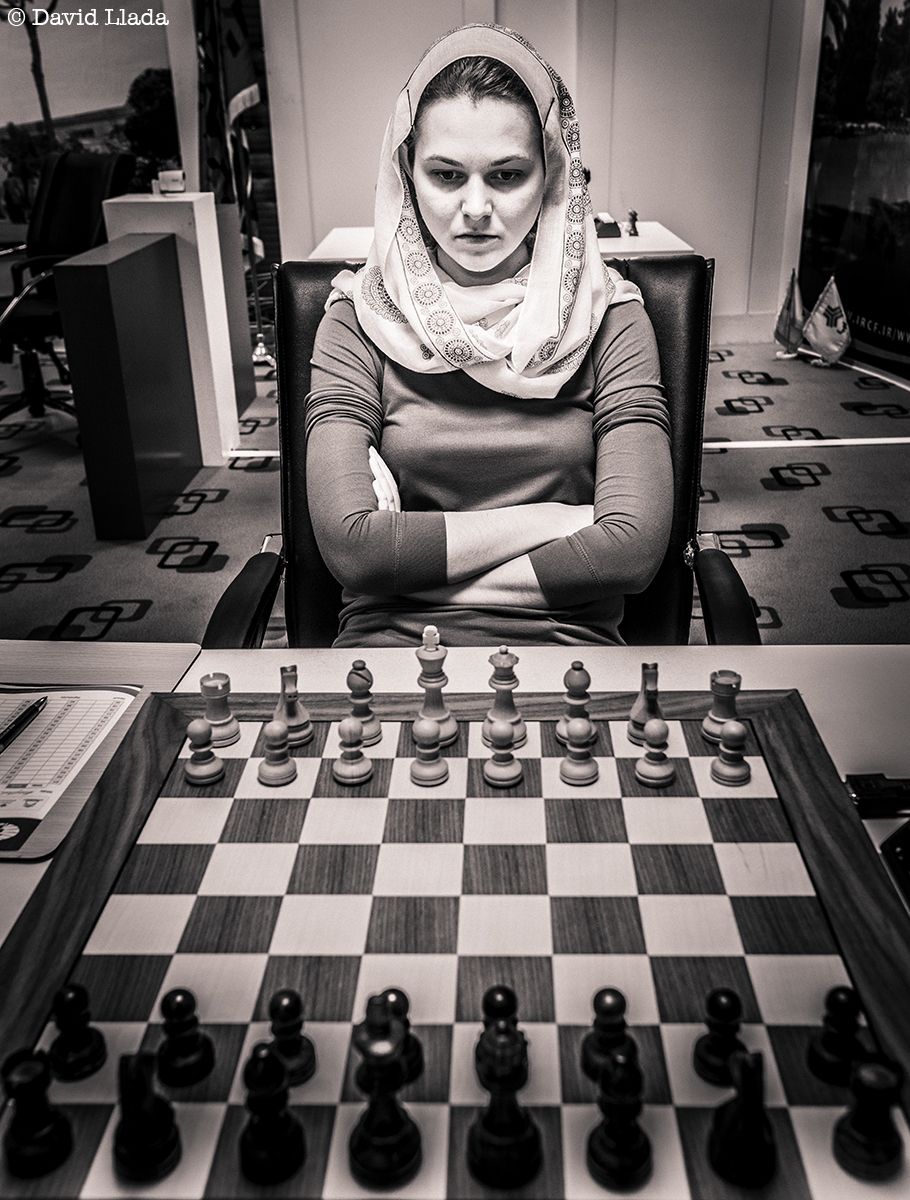
Anna Muzychuk's lucky stars shone the brightest in the first game when from a completely lost position, she managed to win.

To stage a comeback after a bad game is tough. But to come back after a lost game that you were winning by a country mile? You have to have great nerves for that. Kosteniuk, tasked with finding a win with white, just stumbled to her second straight defeat.

Anna Muzychuk has reached the finals of the World Championship after she won 2-0 in the semis. Caissa has been on her side so far as she has not even bothered to play any tiebreakers. She is already the Rapid and Blitz world champion. Will she win the classical title too?
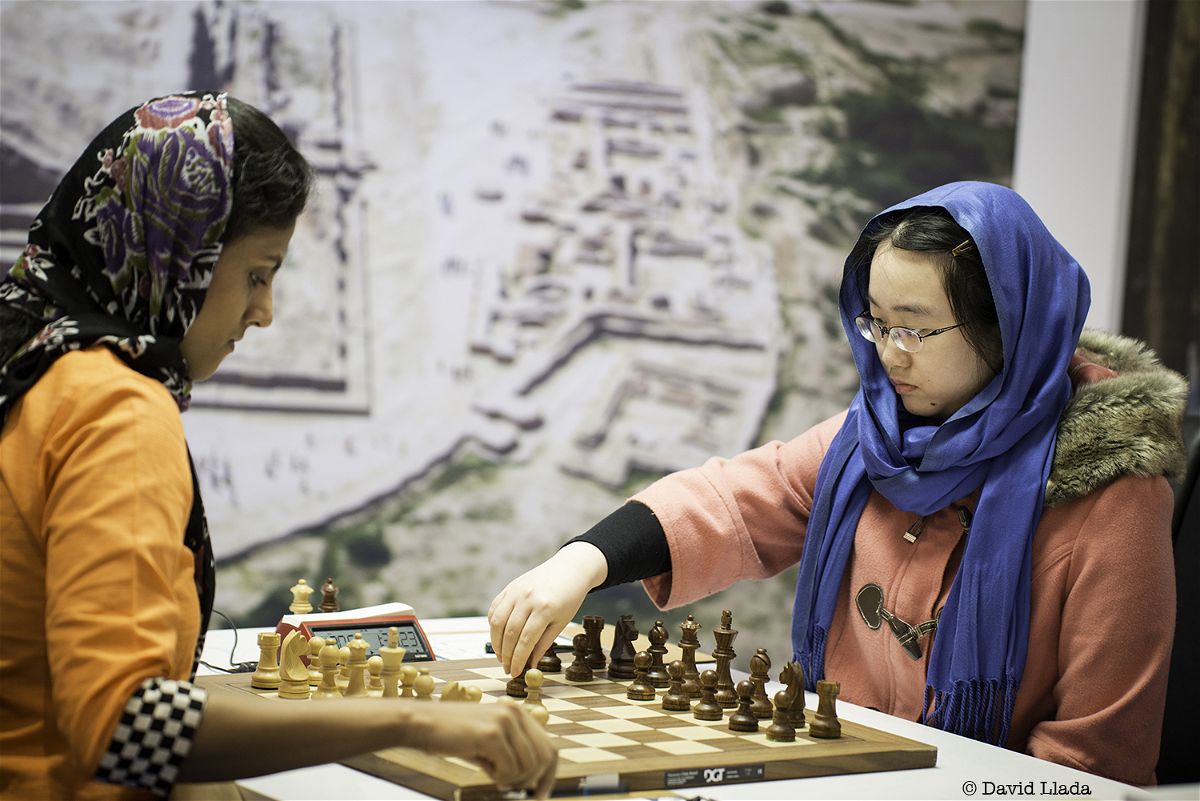
Muzychuk will be facing the winner of the tiebreak clash between Harika and Tan Zhongyi. Harika has won all her matches so far in the tiebreakers. India fans will be fervently praying for her victory.
Watch and Download to your ChessBase, all the games from Round 05
Mate with Knight+Bishop:
IM Sagar Shah explains the technique in one of our older videos.
Also read:
- Interview: N. Ramaraju on Chess (Harika's Coach)
- Women's World Championship 5.1: Epic Accidents
- Tehran WWC 04 TB: Harika maintains control, reaches Semis
